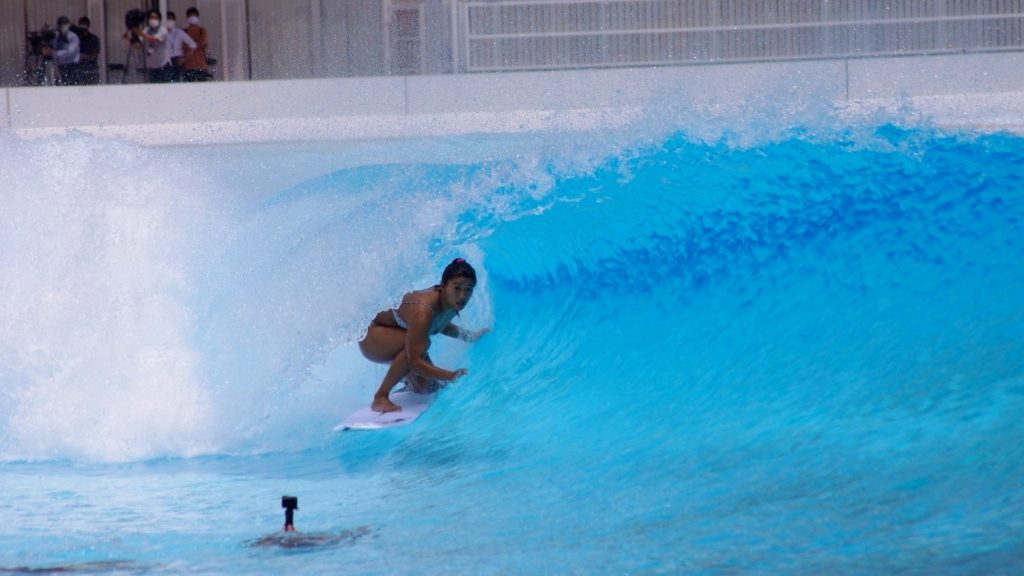Wavepooler Files: Toshihiko Adachi, creator of Surf Stadium Japan

Shizunami is a thriving surf town southeast of Tokyo and is also one of the world’s first surf parks to sit just a stone’s throw from the Pacific ocean. To create this 2.4 acre bastion of stoke, one man had to conceive, fund, dig and ultimately implement his vision. During WavePoolMag’s visit to Surf Stadium Japan we were able to catch up with Toshihiko Adachisan, and truthfully, we were expecting a hyper-paced CEO with a phone glued to their ear. What we discovered was a super chill dude who spoke in slow measured English, asking for translation assistance when needed. He offered his business card in traditional Japan biz fashion, presented with both hands while bowing slightly. I had nothing to present to him in return. Unphased by my cultural gaff, Adachisan smiled and moved on to the business at hand, a conversation about how Shizunami Surf Stadium came to be. So we dug in to discover why he thought a wave pool would be a good idea in this region of Japan.

Can you tell us a little about your background?
I am 69 years old and worked for years at All Nippon Airways until the age of 64. My career involved sales as well as developing new facilities, such as golf courses and opening major hotels across Japan. One such hotel chain we named “ANA Hotels International,” which merged with the Intercontinental Group in 2007. I also played a role in implementing airline loyalty programs and collaborated with major credit card companies like Visa, Diners Club International, and others in Japan on promotions and especially formed a new partnership with American Express to issue new cards. Additionally, I worked with railway companies and collaborated with various credit card companies
How did the wave pool end up here?
There were several potential sites for building approval in city areas, but this site was eventually chosen based on land size and water availability. It was important to consider that the site was designated as a prefectural nature park, and therefore required significant time and effort to overcome that obstacle before construction could begin.

How long did this process take?
It took around four years or so for the entire process to be completed because the Shizuoka Prefecture regulations are very strict.
So there is a lot of government oversight?
Yes, The local government’s supervision was strict for nature conservation until we obtained permits, but I understood that this was to be expected.
Another reason for choosing this site is its location, which is perfect for surfing. The natural sea is only a 5-minute walk away, making it convenient for surfers to practice both in the sea and the pool. More than half of the customers we see here are from other prefectures, especially around Tokyo, which may be a surprise. The pricing may be relatively high for local people, but those from urban areas can afford it and find this place suitable for practice.
So, you’ve been open almost three years now. In that time, have you discovered what works for you commercially? Have you made any changes to your commercial model or customer service approach?
That’s a difficult question. Our main concern is temperature, especially during the colder seasons. The water temperature can drop as low as 3 or 4 degrees Celsius (38-40F) when the outside temperature is around 10 degrees Celsius (50F). We have taken several measures against the cold, such as hot water jacuzzis and dry suit renting, but it is not perfect and further improvements are needed.
Can you share an example of construction methods in Japan compared to those in the US?
One difference is noise regulations at construction sites. In Japan, noise levels must be below 65 decibels, while motor noises can reach around 100 decibels in some cases. During our construction work, soundproofing work was carried out at neighboring residences. After construction our driving motor was covered by a 30-centimeter thick concrete block to keep it to acceptable noise levels.
In the US, there’s no specific classification for wave pools. Did you have trouble classifying it, or was it considered a swimming pool or public bath?
I may not have the perfect answer to your question, but if we compare our pool to a swimming pool, for instance, controlling the water quality in a swimming pool is much more difficult. As for our facility, its classification is more restricted. The water quality is not consistent, so we have to pay special attention to maintaining hygiene levels and controlling bacteria. We clean the water and use a filtration system to ensure its quality.
What made you most happy when you opened the stadium?
When I look at the first test wave in the morning, I am impressed by how beautiful and complete it is. Many things make me happy.
I’d like to hear more about that.
Yes, the Japanese athletes visited here to train at this site before the Olympic Games. That was an unforgettable moment in my life.
Wow, that’s quite an honor to build something and have the best athletes in the world come to you.
It’s wonderful and makes me very happy to see. And just before the Tokyo Olympic Games, we were able to complete the construction work.
What advice would you give to those who want to follow in your footsteps in building a wave facility?
I think it’s important to have a sufficient construction period, a large budget, and an excellent staff. It’s never easy and it can be monotonous until completion. Please do not give up on the way. And be careful to calculate everything long before going forward. Maintaining success requires a big budget and excellent staff, especially having a good technical staff which is crucial to proceeding with new projects.
Related Coverage
